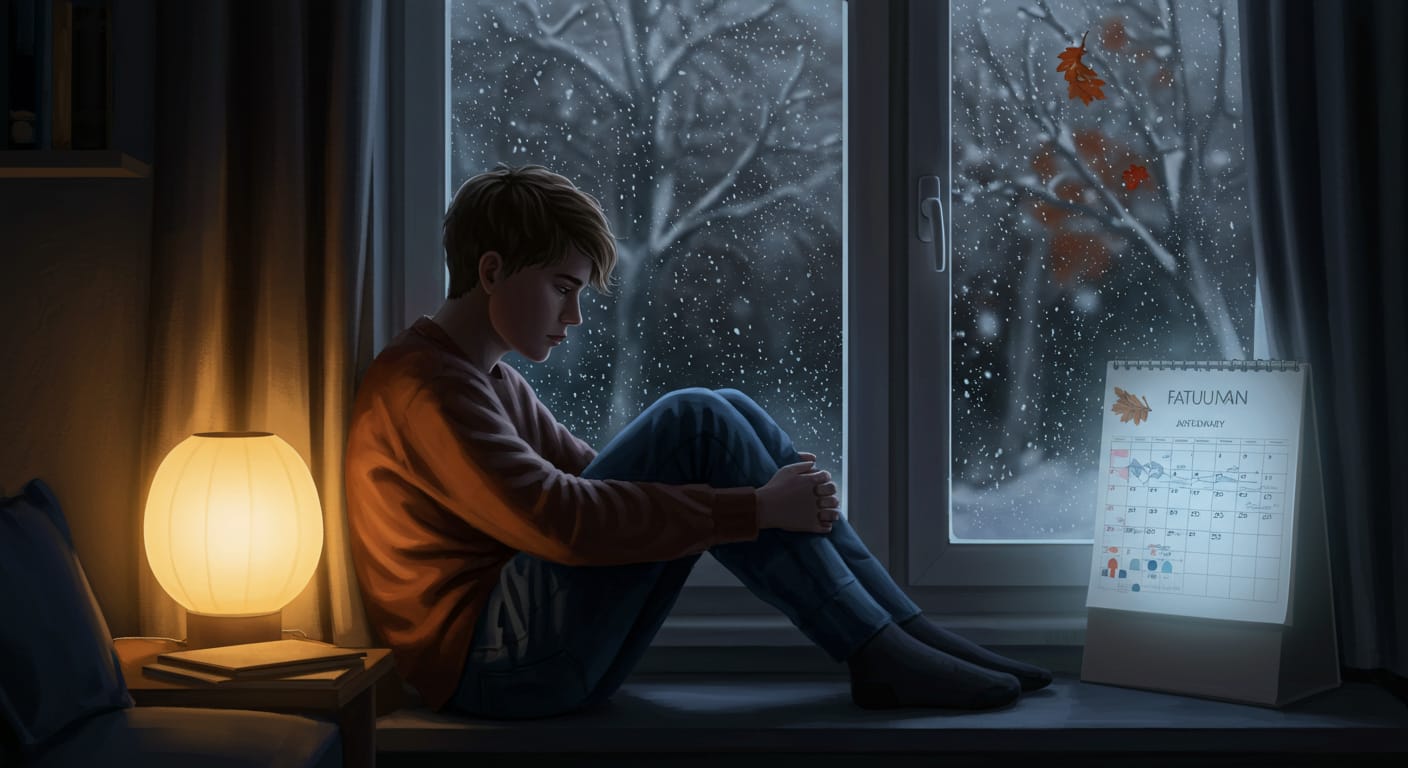Understanding Seasonal Affective Disorder (S.A.D.) in Teens
Have you noticed that your teen seems to struggle with sadness or depression around the same time each year? If so, they might be experiencing a form of depression called Seasonal Affective Disorder, or S.A.D. This condition tends to appear during the fall and winter months—when days are shorter, sunlight is scarce, and routines shift dramatically.
Is It Just “Winter Blues” or Something More?
Although SAD is often seasonal and temporary, it’s not something to brush off as just the “winter blues.” Left untreated, SAD can become debilitating, just like other types of depression. Symptoms can include:
-
Persistent sadness most of the day
-
Loss of interest in previously enjoyed activities
-
Changes in appetite or sleep
-
Feelings of guilt or worthlessness
-
Social withdrawal
-
Difficulty concentrating
-
Thoughts of self-harm or suicide
These symptoms can seriously affect your teen’s daily life—impacting school, relationships, and self-esteem.
What Are the Signs to Look Out For?
While fall and winter are the most common seasons for SAD, it can also occur in spring or summer, though the symptoms may be different:
-
Fall/Winter SAD:
-
Oversleeping
-
Overeating (especially carbs)
-
Low energy
-
Weight gain
-
Social withdrawal
-
-
Spring/Summer SAD:
-
Insomnia
-
Loss of appetite
-
Restlessness or agitation
-
Increased anxiety
-
Possible aggression
-
What Causes SAD Depression?
The exact cause of SAD isn’t fully understood, but it’s believed to be linked to chemical imbalances triggered by lack of sunlight. Reduced sunlight can disrupt the body’s natural rhythms and lower levels of serotonin, a chemical in the brain that affects mood. It can also disturb melatonin production, which helps regulate sleep patterns.
What Can Be Done?
Although there is no “cure” for SAD, there are several effective treatment options, including:
-
Light therapy (phototherapy)
Sitting in front of a special lightbox for 20 to 90 minutes a day—especially in the morning—can help rebalance mood-regulating hormones. -
Vitamin D supplementation
Low vitamin D levels are linked to SAD. Encourage foods like wild-caught salmon, fortified cereals, and mushrooms—or ask your doctor about supplements. -
Medication
Antidepressants such as SSRIs may be prescribed to help manage symptoms. -
Psychotherapy (talk therapy)
Cognitive Behavioral Therapy (CBT) has been shown to be particularly effective in treating SAD.
What You Can Do as a Parent
Support plays a huge role in helping your teen cope with SAD. Here’s how you can help:
-
Don’t dismiss their feelings as “just a phase.”
-
Encourage healthy habits like regular walks, balanced meals, and good sleep routines.
-
Avoid excessive family stress or pressure during the darker months—it can be triggering.
-
Gently check in about how they’re feeling, without judgment.
-
Create a supportive environment where it’s safe to talk about mental health.
“More smiling, less worrying. More compassion, less judgment. More blessed, less stressed. More love, less hate.” — Roy T. Bennett
When to Seek Professional Help
If your teen:
-
Feels down for days on end
-
Is sleeping or eating significantly more or less than usual
-
Withdraws from friends and family
-
Expresses thoughts of suicide or hopelessness
Get professional help immediately. Contact your family doctor, a mental health counselor, or crisis support services. Never take suicidal thoughts lightly.
A Few Simple Coping Tips for Teens with SAD
-
Use light therapy consistently
-
Maintain a regular sleep schedule
-
Eat nourishing foods rich in omega-3s and vitamin D
-
Limit screen time before bed
-
Stay active—light exercise can improve mood
-
Journal thoughts and practice gratitude
-
Talk to someone—don’t bottle it up
“Worry does not empty tomorrow of its sorrow, it empties today of its strength.” — Corrie Ten Boom
Final Thoughts
SAD is more than just seasonal sadness—it’s a serious form of depression that affects many teens and adults alike. The good news? With support, awareness, and the right interventions, your teen can manage SAD and still thrive through the darker seasons.



Thanks for sharing such an important message with us at The Blogger’s Pit Stop
Patrice, thanks for sharing this with us and alerting us about SAD. We will feature your post on the next Blogger’s Pit Stop.
Kathleen
Blogger’s Pit Stop